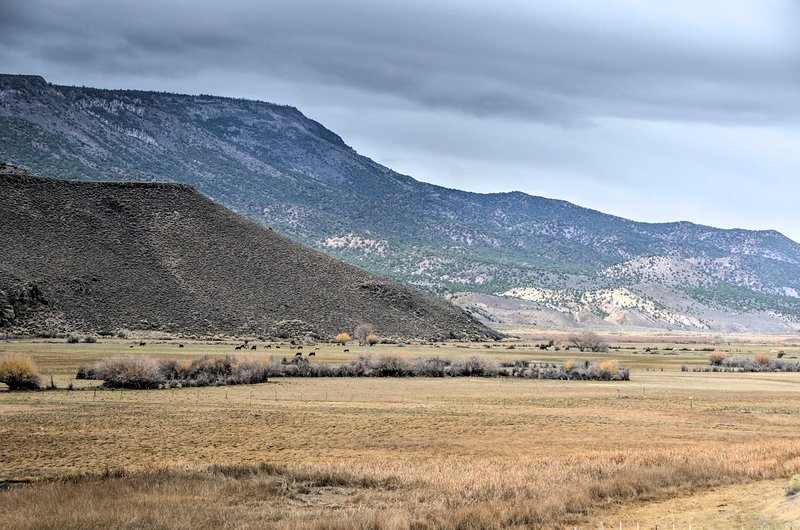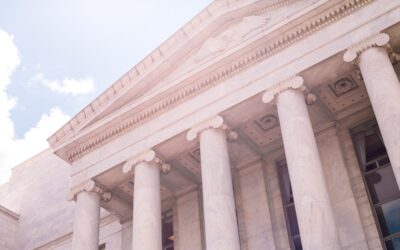Leading in Education: Utah State Superintendent of Public Instruction Sydnee Dickson
Working Together for Utah Education

I’ve known Dr. Sydnee Dickson for a long time. She’s had to put up with me for a while. I’m kind of an outside-the-box thinker. That’s my biggest- I think it’s my biggest character strength and it’s also my biggest character flaw.
Dr. Sydnee Dickson responded, “Isn’t that true for all of us? Our greatest strength can also be our greatest challenge.”
My work with Dr. Dickson includes a few years when she was the Superintendent of Public Instruction and I was on the State Board of Education.
What Does the State Superintendent Do?
Dr. Dickson explained her role:
“I think I would just answer by saying I do a little bit of everything. This is definitely a job that involves a lot of politics.”
Dr. Dickson summed her job up by explaining her focus: “My focus is on creating an educational environment for students where every single student can have opportunities and choices, and that means providing the best education possible, so we support school leaders, charter directors, superintendents, principals, and teachers. The State School Board supports them by setting the conditions for learning, setting policy, advocating for resources. Those are the things that I spend my day doing, and there’s a political element to all of that.”
What Surprised You About Being the Superintendent?
Dr. Sydnee Dickson discussed the enormous responsibility of serving as the Superintendent of Public Instruction:
“The Superintendent is like a lot of other jobs. You really aren’t prepared based on all of your observations and what you think you know. Then you feel that weight and that mantle, so to speak, of caring for 670 thousand students and almost 30 thousand educators and then all the staff and the parents.”
Since there is so much involved, you have to figure out where to focus your time and energy:
“It makes you start to think about this ecosystem of education. It’s very weighty and you try to figure out your role in all of that. What leverage do you have? Who do you engage with? Certainly, having a strategic plan has been very helpful because we have vision and direction and we can be very mission-driven, and that’s very helpful in the role of a superintendent.”
Having a clear set mission and vision is so important. However, as Dr. Dickson pointed out, “We haven’t always had that, so I appreciate being able to work for a board that believes in having that kind of direction. So, just working towards those goals has been really important and that means every day is a little different.”
Preparation

Dr. Sydnee Dickson spent a lot of time working on policy prior to becoming the Superintendent of Public Instruction so she felt that she was prepared in that way. But other parts of the job she was not prepared for:
“Nobody really prepares you for the social-emotional part of it. Certainly, the policy part of it, I kind of had that. I was at the legislature. I was working with your good wife and with others and you and I got into some mischief together trying to create some projects on the Hill. With all of my experience, that part of the job I think I knew. But then you are suddenly feeling responsible for the whole ecosystem of public education, there’s just a lot that goes with it that you’re really not prepared for until you’re living it day-to-day.”
Developing Relationships
One thing that has helped Dr. Dickson be successful is her focus on relationships:
Dr. Dickson said, “I guess for me, it’s about developing relationships and not just with people who think like me, but really trying to engage a variety of perspectives and thinking about how we can move the system together.”
“Relationships are really at the crux of what I perceive to be the way forward. If you don’t have those first, then you can’t advocate for resources. You can’t accomplish the things that you want to accomplish without those relationships.”
I am impressed with Sydnee and how she is able to work with so many different people and stay focused. It is difficult to do that with so many stakeholders in the mix, it’s so easy to kind of get pulled in one direction and then pushed over in another direction and keeping keeping grounded in the face of all these different outside pressures is really an art. It’s difficult to do, and it’s something you do really well. These stakeholders have widely varying agendas. I mean, sometimes almost diametrically opposed, even. And yet, you have the respect of almost every group in the state, Syd. That is hard to do.
Caring About People:
One way that Syndee has been able to gain the respect of others is through her sincere interest in people and taking the time to understand people’s concerns.
“I would just say I’m interested in people. I find engaging with a variety of people to be very fascinating.”
Once Dr. Sydnee Dickson got elected, one of the first things she did was go on a listening tour to get thoughts and visions about public education:
“I first engaged with some thought leaders, businesspeople, people I admired in the community, and just started interviewing people who were interested in education but not formally an educator. These were high-profile people who donate a lot of time and money to charitable causes as well as some higher ed leaders, etc. So, I just started trying to gather together what were their thoughts and vision and interest in public education.”
“And then I went on a listening tour of schools, so 41 districts in four years and a number of charter schools. Having the perspective of context has really made a difference for me.”
Dr. Dickson got the idea for the listening tour from a veteran superintendent in the deep south:
“She was an outsider and was not raised in the south. She was raised in the Midwest, and she did that same sort of thing when she first became superintendent. She went out and really immersed herself in the state. She tried to understand all the political perspectives and got into the schools. That is what has made all the difference for me. I think it’s made me more compassionate, a better leader, having a broader perspective.”
Not Taking Things Personally and Gaining Respect
Dr. Sydnee Dickson survives and thrives in the role because she is careful not to let things get to her:
“I try not to take things personally. Social media exacerbates all of that angst, as you know. There are some nasty things out there that are said and promoted and you just can’t get hung up on those things. If you just stay really mission-driven and focused on the strategic plan, we’ll get there.”
Dr. Sydnee Dickson’s Beginnings in a Two-Room Schoolhouse and Perspective:

Dr. Dickson started out by explaining her K12 learning experience:
“I went to a two-room schoolhouse, as you know. My grandmother was my teacher in my early grades, and I have that rural perspective. I am so grateful that I grew up in a rural community where everybody cared for each other. Animony, Utah was a city of about 100 people when I was there.”
Living in that small town, rural setting really influenced Dr. Dickson’s perspective. “Having that perspective that difference doesn’t matter if you collectively care about each other as human beings, that’s the value system that I grew up with and watched my parents model.”
“So, I think that’s just part of my core. Then, going around and being able to see context, urban, suburban, engaging with families and trying to figure out what the needs are across the state. Then how do you enact policy and programs and try to gather resources that can help them achieve their goals in their context. That’s the foundation that I started with. That’s what helped me grow into this role and hopefully become a wiser leader year after year.”
Serving as an Example for Women
Dr. Sydnee Dickson shared a story about being an example to other women and girls as she serves as a leader:
“When I was a new elementary school principal, I was the first principal in this school of 850 students, and it was a wonderful school. Prior to that, they had a string of male principals who had longevity for the most part serving for 10 years or eight years.
“I’ll never forget this wonderful little girl, Elizabeth. She was just so sweet, and she came up to me one day, first week of school, and said, ‘Principal Dixon, I don’t think I’m going to like you very much.’ And I said, ‘Elizabeth, why? What are you concerned about?’ She said, ‘Women are just meaner than men. I don’t think I’m going to like you as a principal.’ So, I said, ‘Elizabeth, why don’t you just give it a year and let’s see how we do together, so you come and see me at the end of the school year and I want you to report on how you feel about having a woman principal.’”
“So, the last day of school, Elizabeth came to see me, and she had drawn me this wonderful little picture, which I still have. She drew me sitting behind a desk, looking very much more feminine than I probably deserve, and a little note at the bottom that said, ‘To Principal Dickson, the best principal ever. Girls know how to lead.’”
“That for me meant the world. So, just the perspective of women in leadership I think is so important for our young women to see that they can do anything. It’s important for our young men to see both women and men in leadership roles, and to see how we can lead together, that it’s not as much about gender, but it’s about honoring what we all can do, male or female, Black or white, that everybody has leadership in them, and just unpacking that and unwrapping it for every student is really a desire that I have.”
Looking Forward: Move to Personalized Learning

When I asked Dr. Sydnee Dickson what she envisions for the future she said, “I really want education to be reimagined in a way that we get away from things that have bound us for many years. In so many ways, our schools look much like they did when I was in school, when you were in school. We get really focused on things like seat time and transportation and, you know, all those things are still maybe important.”
COVID has given all of us the opportunity to rethink how we do things. The same thing has happened with education in Utah:
“We’ve learned a lot through this COVID moment, and seat time isn’t that important, right? So, we’ve been working for some time on personalized learning and competency-based learning, and for me that’s such an exciting way to really reimagine education.”
But what does it look like?
Dr. Dickson explains, “It is taking students where they’re at and helping them move forward rather than this static framework of everybody moves together at the same pace. We work on establishing what the skills, knowledge, and attitudes are that students need to have as they transition from one system to another.”
Making this possible isn’t something that just happens though. It requires the support of the community.
Dr. Dickson said, “We are working really closely with higher ed, with our parents, with community leaders, so that we can engage students in a way where they have hands-on opportunities and experiences. We want them to know what their possibilities are. To do that we have to use those skills of creativity and problem-solving and collaboration and humor and kindness. Those are all things that are so important in the workplace.”
In order to meet these goals, they are launching a new program:
“We’ve launched Portrait of a Graduate. I’m so excited about that work, and really thinking about these aspirational goals for students of mastering certain elements and having autonomy and finding purpose in life. Doesn’t that sound like a rich education?”
“And that’s what I want for every single student. So, my goal is to see Portrait of a Graduate actualized in every classroom in every school in Utah and then to connect that with higher education as well.”
“That way regardless of where students are at, as they are venturing out they will have a set of skills that can help them be nimble and move from career to career. Or even as these careers unfold that haven’t even been developed yet, they’re prepared because of the skills they have. That really is my goal that I see coming to fruition, and by my, I mean our goal as an education family.”
At the end of the meeting I just had to tell the Superintendent, thank you so much for being with me today. I have so enjoyed spending time with her, and as she knows, I’m one of her biggest fans.
Dr. Sydnee Dickson then talked about how she appreciates my support:
“Stan, I always say you’re the hub of the wheel. You’re connected to everybody I know, and I appreciate that you always have your eye on education and you’re always trying to make connections. You’re a supporter of where we’re headed. You’ve always preached these things, so knowing that, I appreciate the way that you connect people to education and education to people and ideas. I’m really excited about the future of education in Utah and thanks for being a part of that.”
Lessons Learned

- She wants every student to have lots of choices in their education.
- Developing relationships with those who have a variety of perspectives is key to finding a way forward in education.
- She doesn’t take things personally.
- Leadership is an obligation and a calling.
- It is good that young women to see that they can be anything.
- She wants education reimagined.
- They have something at the State Board of Education called Portrait of a Graduate. They want to see if they can reimagine education into personalized learning and finding out where a child is and then helping them move forward in their education so they can be all they can be.



